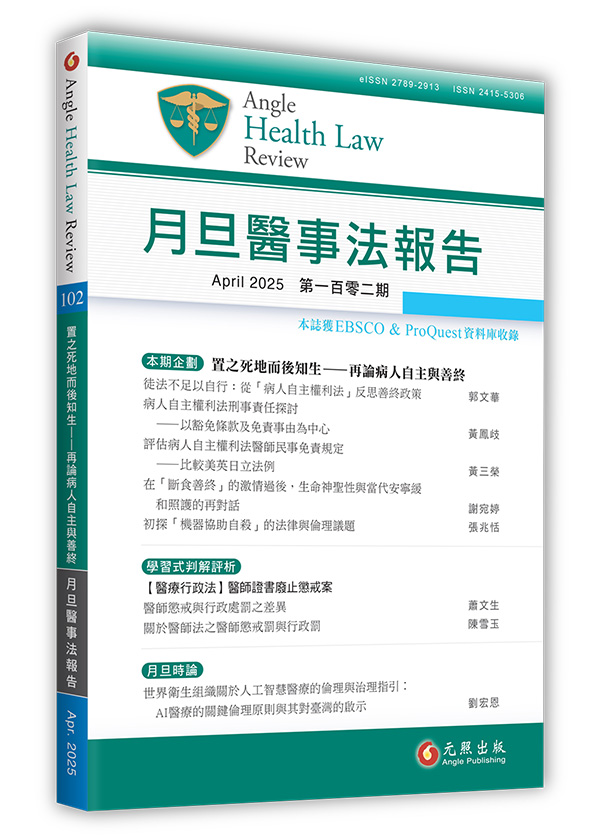在「斷食善終」的激情過後,生命神聖性與當代安寧緩和照護的再對話【本期企劃】 試閱
The Re-interaction of Sanctity of Life and the Modern Hospice Palliative Care after the Demagoguery of “Fasting to Death”
近年來,「斷食善終」在公眾的輿論下,再度挑起對死亡權的籲求以及難以預測的老衰或退化性疾病歷程其照護困境的關注。本文以Ronald Dworkin的「神聖價值」為切入點,探討其與安寧緩和照護的三大核心面向「有品質的生活」、「活著的藝術」及「深思熟慮的商討」之關聯,試圖突破生與死的二元對立。本文認為,假如死去是最後讓病人獲致尊嚴生命的手段,那麼在慎重地考慮朝向該目標行動時,仍應提供全人的舒適照護,同時應避免將「結束生命」視為受苦的唯一解方。
In recent years, public discourse on “fasting to death” has reignited calls for the right to die while also highlighting the challenges of caring for patients with unpredictable aging or degenerative diseases. This article, drawing on Ronald Dworkin’s concept of “sanctity of life,” explores its connection with the three core aspects of hospice and palliative care: “quality of life,” “the art of living,” and “deliberative talk,” aiming to move beyond the binary opposition between life and death. It argues that if dying is ultimately a means to preserve a patient’s dignity, then while carefully considering such an option, comprehensive palliative care should still be provided. At the same time, ending life should not be regarded as the sole solution to suffering.
046-056






